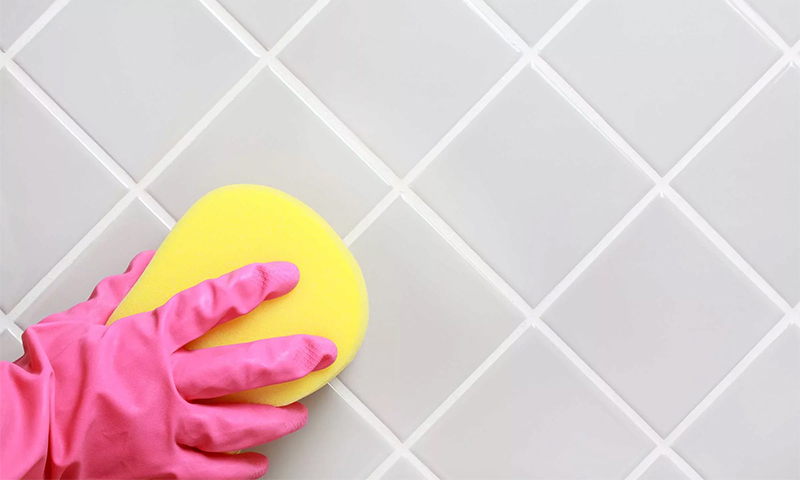Facing tiles have never been a cheap material. But its fantastic resistance to any external factors and ease of care fully justify the money spent, time and effort. Today this type of decoration is again in favor - we have already managed to give up on the washable wallpaper, plastic panels, and now we are back to the tile. However, in recent years, its range has grown so much that it has become very difficult to make a choice.

Content:
The best tile manufacturers - which company to choose
The number of tile manufacturers amounts to hundreds, but Italian and Spanish companies are considered the best, such as:
- Marazzi;
- Concorde Ceramiche;
- Adex;
- Mainzu.
They produce a truly luxurious finish of the highest quality, featuring a flawless design. However, its cost is not affordable for everyone. It is good that large European companies began to open their plants in Russia, Ukraine and Belarus.
Due to this, our customers have an opportunity to purchase luxury ceramics from world brands at a more affordable price.
Good collections of tiles are also offered by Polish and Czech manufacturers:
- Cersanit;
- Tubadzin;
- Opoczno;
- Rako.
The cost of their products is rather average and quite affordable for many families. And the quality is not too inferior to Italian or Spanish products, since they use the same technologies - the only difference is in the composition of the clay.
With the best series of tiles from manufacturers you can find in our ranking of the best manufacturers. But to make the right choice, you still have to figure out all the variety of piecework and its characteristics.
Types of tiles
Ceramic
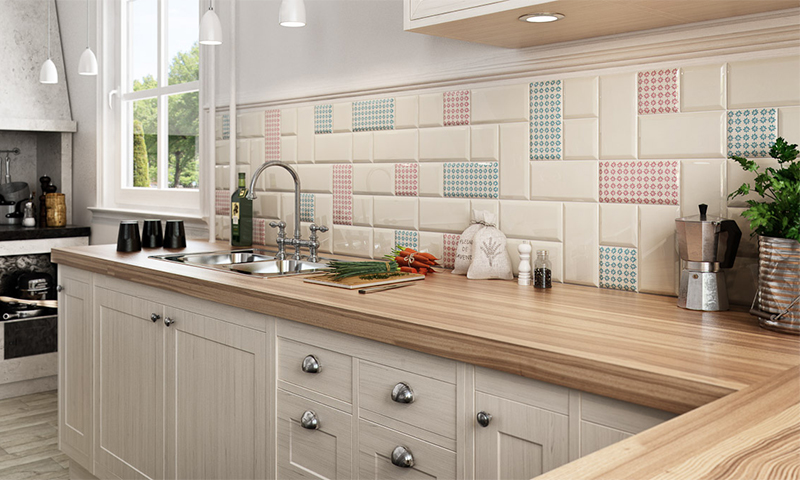
Often under the finishing tiles mean exactly tile - facing material, made of pressed and baked ceramics. It is absolutely eco-friendly, practical and long-lasting, it is not afraid of temperature changes.
For a long time, ceramics was the only option for facing walls and floors in wet rooms, but today it has almost completely “moved” to vertical surfaces.
Now the tile is produced 4-5 mm thick, which allows to reduce the weight of the finish, but to maintain its high strength.
Pros:
- High water resistance, especially after glazing;
- Durability and good abrasion resistance;
- Luxurious appearance;
- Rich selection of designs.
Minuses:
- Ceramics are non-plastic and can easily crack if struck or improperly assembled;
- Does not muffle sounds.
Glass

Very effective look of facing which is ideally suited for damp rooms. Unlike ceramics, glass does not absorb water at all, and it also has an enviable chemical resistance.
The glossy shine of the glass tile allows you to add light to cramped rooms, so for small baths in typical apartments and kitchens in the Khrushchev houses this is a great option.
It is usually produced in small formats up to 10x10 cm (less often 15x15), and also in the form of a square or rectangular mosaic. Thickness of a glass tile fluctuates within 3-9 mm.
Pros:
- Hygiene - dirt does not linger on the glass surface and is easily removed even without chemical agents;
- High enough impact resistance;
- Luxurious appearance with aquarium effect;
- Withstands higher heat compared to ceramics - up to +150 ° C against +125.
Minuses:
- Afraid of scratching and abrasive cleaning;
- It is not cheap.
Porcelain stoneware
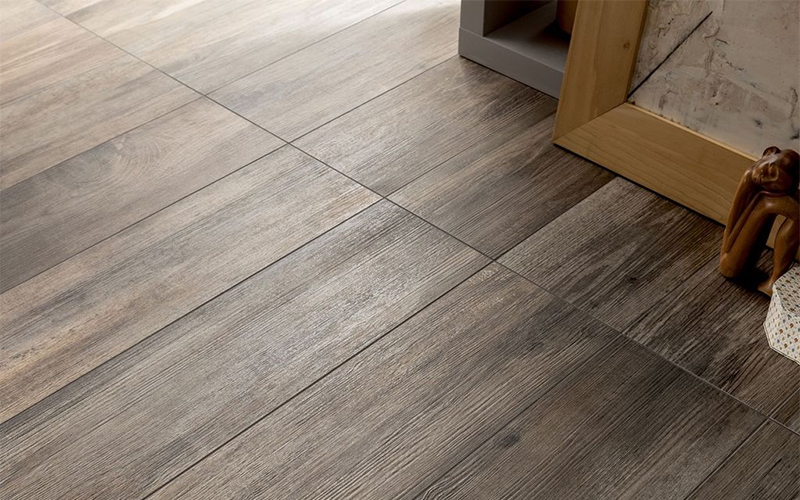
Most manufacturers of floor tiles have completely abandoned the manufacture of traditional tiles in favor of porcelain.
The technology of its production, as well as its composition, is not too different from ordinary ceramics, but here reinforcing additives like mica or feldspar are already introduced. In addition, porcelain is dry pressed under very high pressure, gaining incredible strength.
It is produced most often in the format from 30x30 to 60x60 cm. But you can also find larger plates on sale - it all depends on the technical capabilities of the manufacturer.
Pros:
- High density and, accordingly, strength;
- Low permeability and excellent frost resistance;
- Does not react with chemicals, with the exception of some very aggressive acids;
- Suitable for flooring, stairs and open areas;
- Unlike conventional ceramics, it does not break even when laid on an uneven surface.
Minuses:
- Great weight;
- Low thermal conductivity, because of which the floor always seems cold;
- Difficulties of installation - it is very difficult to cut a tile into additional elements.
Metallic
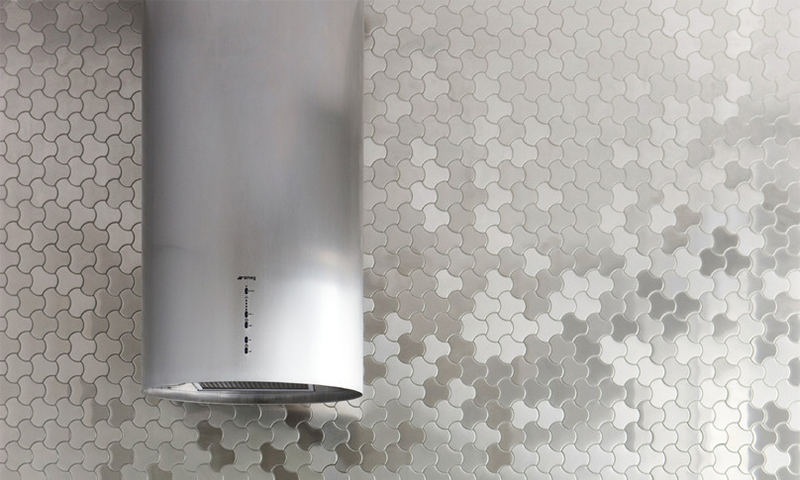
The original type of finish, which is still used only by professional designers. In fact, it is really worth looking at the metal tile.
This is a very durable and wear-resistant material, hygienic and yet devoid of the main drawback of ceramic counterparts - it is almost impossible to break (except to leave a dent).
For the production of metal tiles can be used not only stainless steel, but also bronze, copper, brass, etc.
Pros:
- High abrasion resistance;
- Hygiene;
- Heat resistance - you can safely mount over the gas stove;
- Spectacular appearance;
- It goes well with other elements of the interior.
Minuses:
- Unpleasantly cold to the touch;
- Glossy polished tiles are afraid of abrasive cleaning products;
- The brilliant tile is easily cleared of any pollution, but it is necessary to rub it quite often.
Tile selection options

Purpose
The same tile can not be glued to the floor and to the walls - all because of the different modes of operation.
Wall cladding should be fairly easy, because given the thick layer of mortar, it gives a serious load on the walls.
It is also desirable that the tile has a smooth surface that does not cause any special problems in the care. And the additional coating with glossy glaze will provide her with good moisture resistance. You can find tiles that are suitable for the walls by the hand icon.
Finishing for the floor should not only be thicker and stronger, but also have a certain roughness. Of course, the textured surface is harder to wash, but you will not slip on the smooth floor - even if you pour water on it.
The roughness coefficient of the floor tile should be between 0.4 and 0.75. A label with the image of a foot on an inclined surface will tell about the presence of the necessary properties.
Persistence
First of all, you need to ask about the resistance of tiles to abrasion.
For its designation it is customary to use the PEI classification:
1. For the floor in the bathroom and kitchen can be limited to tiles with a PEI of 2-3.
2. For stairs, flooring hallway, balcony or walk-through rooms suitable ceramics 3-4 class.
3. The most resistant to abrasion is a tile with PEI 5 - it is used only in public places (in hospitals, shops, schools, etc.).
Resistance to chemicals is another important indicator for tile. For its designation use Latin letters from A to D.
The most resistant to aggressive chemistry tile is marked with AA. This should be used where maximum hygienic cleanliness is required: in bathrooms, kitchens, pools.
Surface properties
What we value tile so much is its water resistance. However, the indices of hydrophobicity in its different species may differ significantly.
Because of this, an additional division of the cladding into several classes was introduced:
1. I - it includes the most resistant tile with water absorption less than 3%.This is a glazed ceramic monokotture of white and red clay, as well as porcelain.
2. IIA - absorbs from 3 to 6% moisture. Such properties has a strong cotto tiles, made by extrusion.
3. IIB - here water absorption is even higher (6-10%). Similar indicators are found in the combination of cottoforte tiles made from different grades of clay.
4. III - absorbs more than 10% of water. This is a porous majolica and faience tiles of white clay.
Equally important is the roughness of the tile surface, but here it all depends on the place of installation. If it is mounted on a wall, high roughness is not needed and even undesirable. After all, a glossy tile is much easier to care for. Although this will have to be done often, handprints, water drops and stains after washing are all too visible on it.
But to step on a wet and absolutely smooth floor is really scary. That is why here you need to lay tiles with a fairly high roughness coefficient.
1. The optimal rate for the bathroom and the kitchen is 0.6-0.75.
2. In other rooms you can get closer to the acceptable minimum - 0.4. Such a coating is easily recognizable by fine-grained dusting or relief pattern.
Shape and size
It is useless to try to classify tiles by these parameters. Designers and manufacturers have long been not limited to original patterns on the surface of the tile, but with might and main experiment with size and shape, offering new, original versions.
No matter how beautiful such a lining on the stand looks, you need to soberly assess the possibility of its use in each particular case.
Standard tile
The most common and familiar option with straight edges and corners. It is easier to lay, even if you have no experience in this matter, and to achieve the original appearance is easy, simply by combining stones with different patterns.
Standard tiles can be square or rectangular. Square is available in several popular sizes:
1. 10x10 cm - it looks stylish on the kitchen apron and the walls of small rooms, but it will take a long time to lay small stones.
2. 20x20 - this format is not particularly widespread in our country, but in retro-interiors such tile looks quite appropriate. And when installing problems with it does not arise.
3. From 30x30 to 45x45 - large-format tiles, which are more often used for floor finishing.
Rectangular lining is much more diverse, but here you can select several common formats:
1. 20x30 cm - “classics of the genre”. The average size of tiles that is suitable for decoration of rooms ranging from 8 m2. In the installation is quite simple, but if the room is replete with corners and niches, the output scraps will turn out rather big.
2. 10x20 is a very popular tile format. Looks great in small rooms and as a decoration of individual zones.
3. 30x90 is a good option for facing large areas. But it is better if it is a rectified tile with an original texture or a small pattern that distracts attention from the seams. Ideally, when such large elements imitate the surface of a stone or a tree, a feeling is created that the wall is made of natural materials, and not ordinary tile.
Kabanchik
One of the varieties of rectangular tiles with a ratio of the sides, like a construction brick, and pronounced chamfers. Thanks to such an unusual format, it looks interesting in both urban and vintage interiors.
Available in several popular sizes from 6.5x12 to 15x45 cm, but a hog with sides of 7.5x15 cm is considered a classic.
Due to the small size of the stones, laying such a tile on large surfaces turns out to be time consuming, so the manufacturers offered an option that can be called a psevdokabanchik. These are large elements with decorative seams on the front side, turning one tile into several separate “bricks”.
When installing here the main thing is to clearly maintain the width of the gaps and choose the right color for the grout - then no one will notice the substitution.
Mosaic
Very beautiful tiles, but incredibly difficult to install. Its dimensions are usually 2.5x2.5 or 5x5 cm, although today there are options in the form of small rectangular dies.
For the installation of mosaics is better to invite a professional. If you want to do everything yourself, look for special cards - tiles ready for laying, fixed in even rows on a mesh or paper basis. It’s easier and faster to work with them.
Using a mosaic for facing all the walls in a room is not a good idea. Even in a small bathroom from the abundance of small parts can ruffle in the eyes. But as decorative inserts or panels, it looks just great.
Get ready for the fact that the mosaic will be difficult not only to lay, but also to clean. And most of all the problems will not be delivered by the tile itself, but by the numerous seams.
Designer
Such tiles can have almost any shape: seashells, rhombuses, scales, triangles, colors, etc. It is sold, as a rule, complete with small stone inserts to fill in the empty spaces between non-standard edges.
Designer ceramics looks luxurious in any interior and can even be used in residential premises. But it is very expensive and requires professional styling, especially if you have to bend around the outer corners.
Caliber
The deviation of the height and width of the tile from the size stated by the manufacturer may differ even within the same collection. The difference in the actual parameters - and there is a caliber, which should be indicated on the label.
The number "0" indicates that the box is tile that exactly matches the standard size. But the presence of deviations from the nominal will not be a disaster. The main thing is that on all packages the caliber should be the same or differ by no more than one.
Which tile to choose
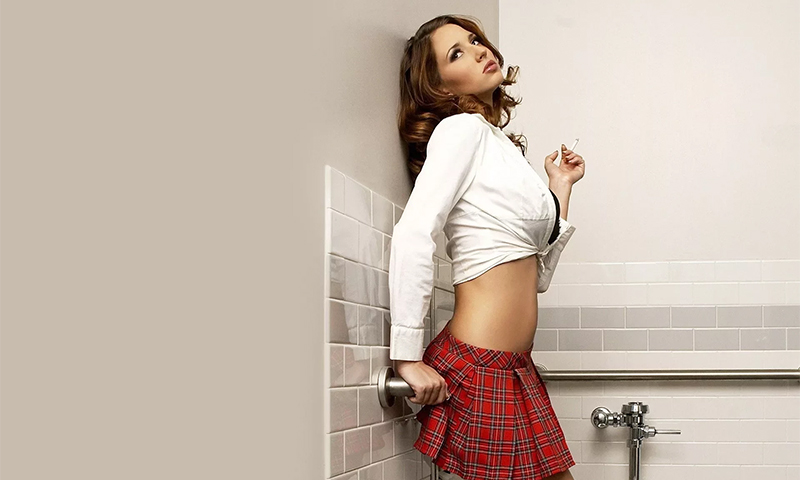
1. For kitchen apron need high-end tile chemical resistance - not lower than "A". The size is desirable to take the average design you choose yourself. But here it is better to avoid relief patterns in this area, so that later you don’t have to clean them with a toothbrush.
2. In the "hot zones" in the stove in the kitchen or in the bath, you can use metal tiles. It is also suitable for decorating small rooms in which there is enough light.
3. In the bathroom or combined bathroom need a moisture-resistant and hygienic finish. Glass is ideal, but if you are a fan of ceramics, take glazed tiles with water repellency class I or IIA. Be sure to place durable porcelain stoneware with maximum surface roughness on the floor.
4. For the bath or swimming pool, a particularly resistant lining may be required, which will not deteriorate from constant contact with chlorinated water and disinfectants (“AA” class). Ideally, it should be a glass tile. As an alternative, you should consider cotto or porcelain stoneware with a textured surface.
5. Mosaic as a decorative element will perfectly fit into any room. The best place for it will be a relatively “dry” part of the wall in the bathroom, but you can use it in the kitchen - just away from the work area. Of course, it looks great on an apron, but it will be too often to clean the numerous seams between small tiles.
How much does a tile cost?
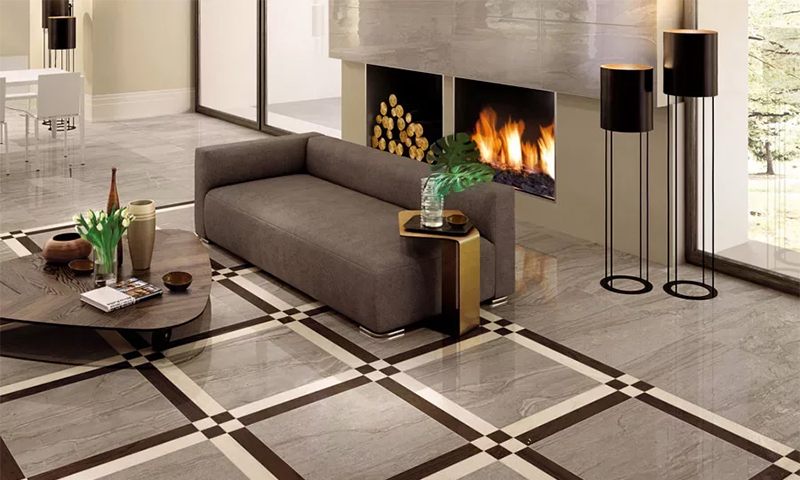
1. The price of standard ceramic tiles for wall cladding varies from 400-75000 rubles per square meter. Floor option will cost from 900 to 125 thousand rubles.
2. Glass tiles of medium and large format can be purchased from 300 to 12 thousand for 1 square. m
3. A square of ceramic mosaic will cost about 3,500-22,000 rubles, glass will pull in the amount of 900 rubles. up to 88 thousand.
4. Wall tiles of porcelain tiles cost about 700-3000 rubles / m2, floor from 400 to 8000.
5. Metal tile is more expensive than the rest - from 20 to 130 thousand rubles per square.
It will be interesting to friends too




